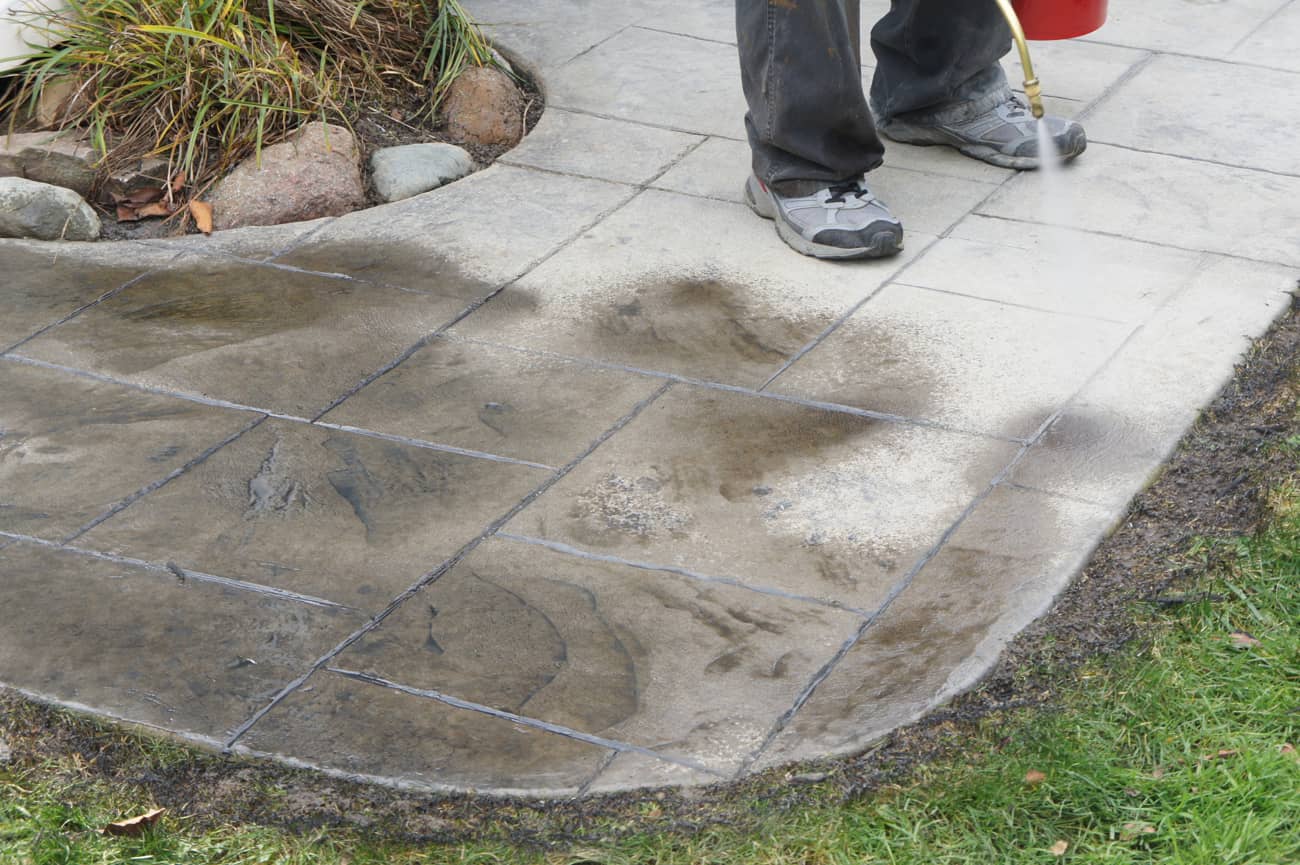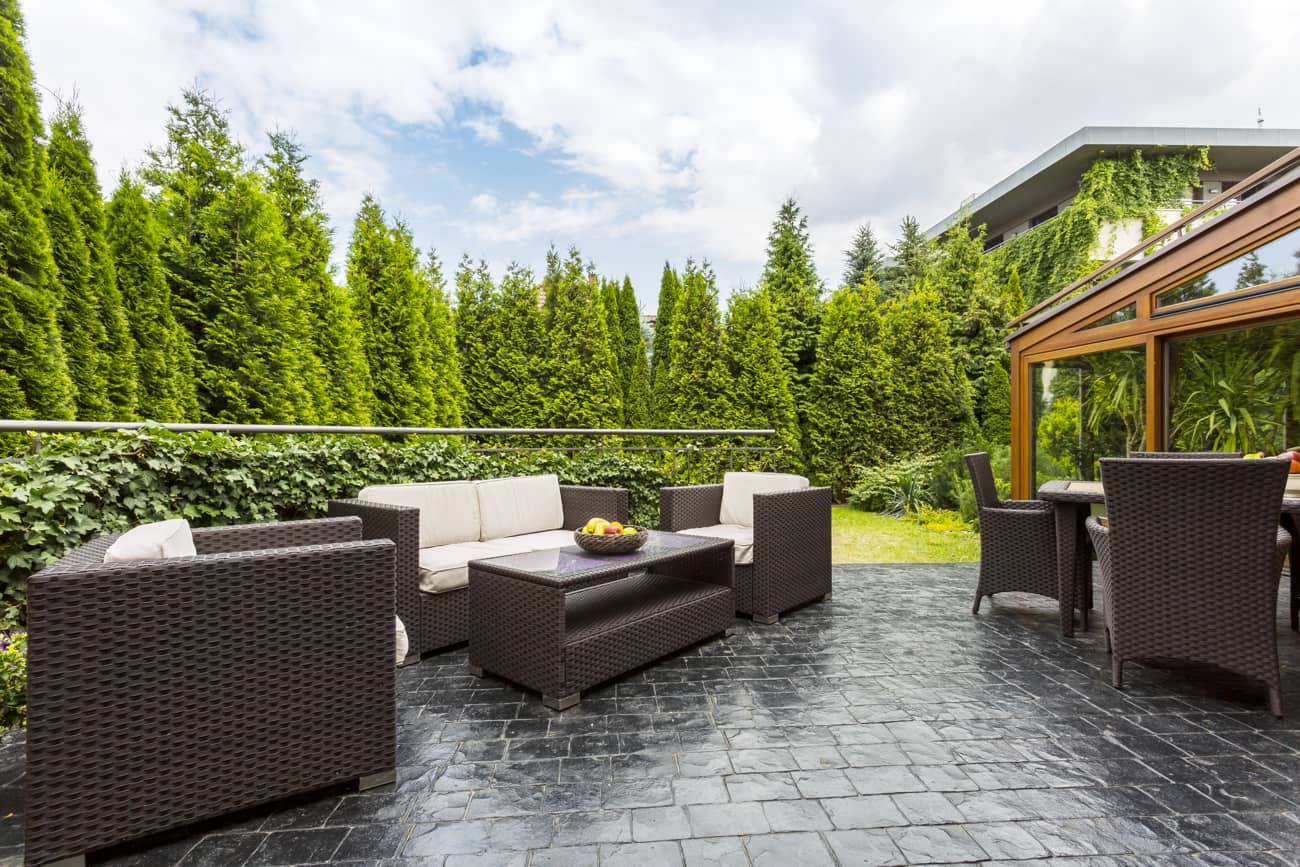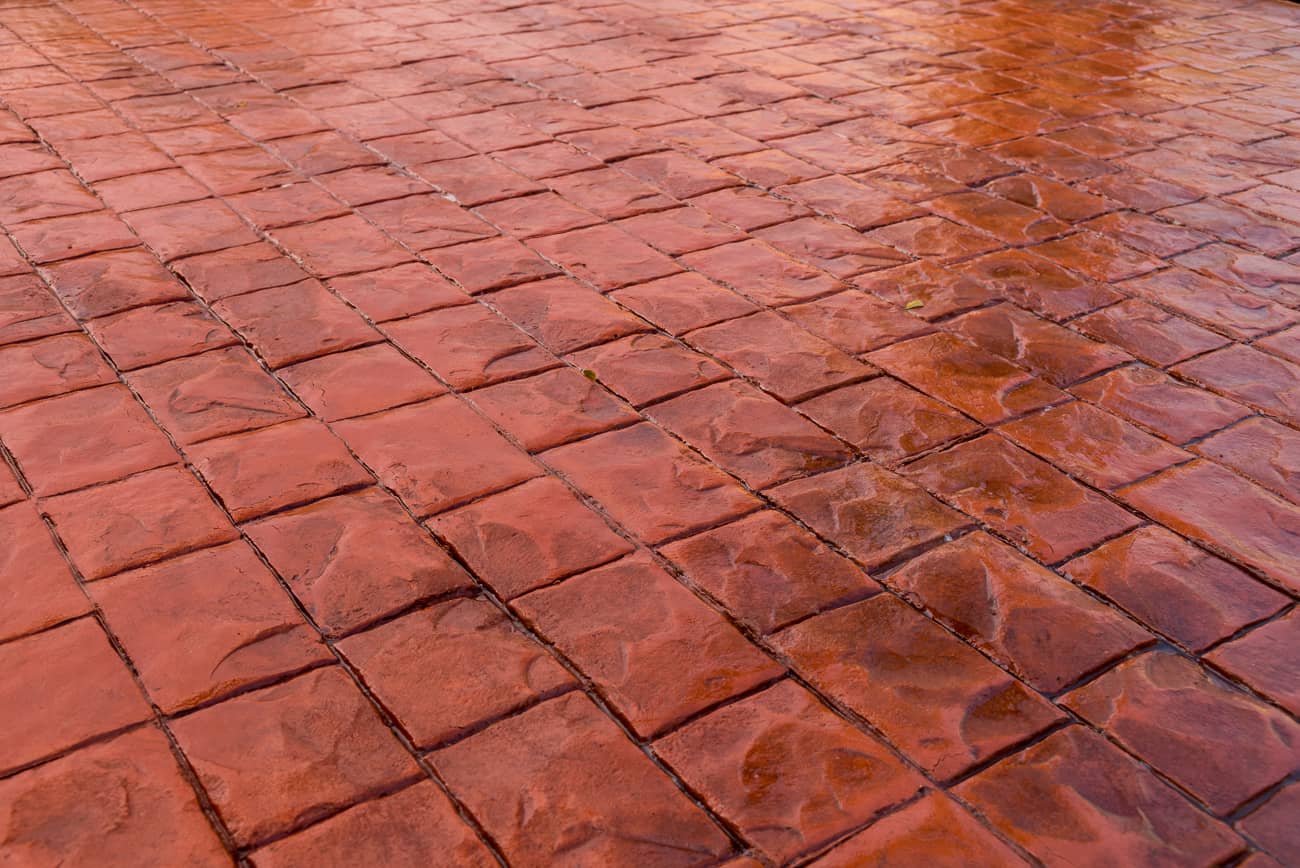Imprinted concrete in exteriors, the best solution
When it comes to creating unique spaces in outdoor areas, we always think twice. It's normal because we look for materials that ensure the highest constructive and decorative guarantees and not all of them guarantee it.
Thus, to achieve areas that last for a long time and have shapes, reliefs, and colors that attract attention, imprinted concrete is increasingly becoming the most used material.
In this way, outdoor imprinted concrete has become the coating that most guarantees what professionals and users are looking for. Next, we are going to analyze why.
Advantages of imprinted concrete in exteriors
There is no construction material with as many beneficial properties for outdoor spaces as theimprinted concrete. Now, with this enumeration you will clearly understand the reasons. We warn that they are not few.
Diversity in their designs
With this coating, the possibilities of geometric patterns in stamped floors, textures and colors are almost infinite. Thanks to all theimprinted concrete molds spaces with a high personal and decorative component can be created.
Quick execution
The mortar on site, being a continuous coating, is generally faster than paving a floor with cobblestones, tiles or other similar materials. This represents a significant advantage in the construction sector. Also note that care must be taken with the geometry, as the more complex it is, the longer the execution times of the work or renovation will be.
Most competitive price
The price per square meter is usually lower compared to other materials that, in addition, are less resistant and their application processes are usually much slower. The imprinted concrete outdoors is shown as a high-quality material if we compare it with others that only offer average qualities.
Prevent the growth of weeds
Weeds are very harmful to surfaces, especially to floors. It is here, in these situations where imprinted concrete can be shown as a great option to apply in gardens or places where weeds may appear. By creating a slab-style surface, we will prevent these weeds from penetrating through the created surface, preventing them from deforming and moisture from taking over the area itself.
Simplicity in its maintenance
After execution, no special attention is required, but perfect installation is necessary if we don't want problems afterwards. As an aspect to consider: if there is a lot of wear from driving the car or on the contrary, it is necessary to make a new sealing layer.
Long service life
With great durability and its multiple resistances, outdoor imprinted concrete guarantees the best conditions of the areas offering a very long useful life, much longer than other materials in this type of outdoor spaces.
Impact resistant
Cualquier impacto fuerte en el suelo se concentra en un solo punto, en los adoquines, en muchos casos lo veremos partido en dos.

Ideas for applying imprinted concrete outdoors
Imprinted concrete can be used in outdoor spaces in many ways, also demonstrating a great spatial versatility. Therefore, as we saw earlier in its virtues, it seems like a construction material made to apply in this type of spaces.
Also, it is necessary to take into account the amount of colors and finishes that can be achieved, as well as its resistance, to understand that we are dealing with a material of excellent conditions.
After this brief introduction, we are going to see some options to apply this material.
Imprinted concrete for outdoor terraces
Stamped concrete floors are the places where outdoor use tends to extend the most. It is a material like imprinted concrete that is usually used to cover floors, although it can also be used on walls. When found in pavements, we find surfaces of great resistance that will withstand both the consequences of people's daily life and the threats that come from the weather.
In addition, if we consider its ease of cleaning, it becomes the ideal coating for these types of outdoor rooms.
Exterior imprinted concrete on walls
Walls and facades coated with imprinted concrete have the same advantages as floors. If it is also combined with an outdoor floor of this type of mortar, resistances skyrocket, reaching the highest levels. In addition, due to the ease of customization it offers in any space and especially when dealing with vertical surfaces where any finish and the details of any effect produced by the different molds that can be applied to this material are clearly visible.
Speaking of their resistances, they are also going to be the highest, withstanding any type of external threat or weather inclemency without distinction.
Exterior imprinted concrete for pools
Not specifically the pools, but their surroundings, in these areas we find in the imprinted concrete the best of allies since it is going to protect the people who want to access or leave the pools and go to other areas of the house with its non-slip surfaces.
This material is really used, especially, in areas adjacent to or surrounding the pool such as the floor or pavement that is located around the curb. Resistance to shocks, care against slips, superior water resistance and an excellent ability to keep its colors intact in the face of direct and permanent contact with the sun are the attributes for which this material is one of the most used in these types of spaces.

Imprinted concrete outdoors in gardens or parks
When talking about imprinted concrete, we are talking about one of the most used materials also in public spaces. This, in part, is because it is resistant to the transit of people or vehicles, without the areas it covers being affected. In this way, by applying it in these crowded and beautiful spaces, citizens can enjoy their spaces in the best conditions.
It should also be noted that this material guarantees aesthetic coherence wherever it is applied and blends perfectly with any environment, especially if it is natural or surrounded by natural elements such as plants, flowers or fountains, so common in this type of spaces.
Care of outdoor imprinted concrete surfaces
Surfaces coated with imprinted concrete can be cleaned very easily. These should be swept and washed from time to time to avoid dirt accumulation. It is enough to use a garden hose or a pressure washer, a broom, and a mild detergent.
On the other hand, and for these outdoor areas to be much more efficient against dirt and give a better performance, they must be hermetically sealed, at least, 3 years after their application, this will increase their resistance and facilitate the subsequent and punctual cleaning tasks that need to be carried out.
When washing with soap, it should be rinsed very well if necessary, even several times to remove all traces of this cleaning element. After washing, it should be completely dried and left for 24 hours in a natural air drying place, as well as a leaf dryer can be used as extra help.
How is imprinted concrete applied outdoors?
The method of applying imprinted concrete outdoors is as simple as the process of applying it indoors. You just have to take into account the temperatures and conditions of rain or wind that may occur at the time of covering the areas.
Next, we are going to describe the application processes on floors and walls.

Application of imprinted concrete on outdoor floors
This is how the material we usually see at the entrances of certain residential areas, large commercial surfaces or parks, among others, is applied.
1 - Preparation of the pavement
Before pouring the mortar, it is essential to prepare the surface. What does this mean? Well, the area where it is going to be applied must be cleaned of leaves or stones that could be a problem for the future durability of the applied pavement.
In this aspect, of preparation, it is necessary to ensure that the ground is level and does not present holes or other irregularities. It will also be necessary to delimit the area to be applied with a perimeter joint formed by a formwork box.
2 - Pouring of the concrete
Now, with the support fully prepared for the mortar pouring, we proceed to do it. Thus, we will have to pour the concrete evenly. We must ensure that the layer is leveled. Then, some polypropylene fibers are added to increase the subsequent resistance of the mortar. Once these are added, a steel mesh must be used on the perimeters.
3 - Leveling and screeding
To do this, to level and rule, we will use a roller so that the concrete is compacted and bleeds. To smooth it, use a trowel. For the process to be a complete success, during the ruling there should be no mechanical vibration.
4 - Troweling of the concrete
While the mortar is fresh, it is necessary to trowel it to ensure a resistant, smooth, and compact surface. It is important to perform this step to prevent blisters from appearing later, in situations of extreme humidity.
5 - Color concrete
This process can be carried out in two different ways: either by sprinkling the pigments or by mixing them with the concrete mass. In both cases, you have to make sure to pour the exact amount of material so that the mix is perfect.
6 - Apply the release agent
Once set, to ensure the best conditions of the future floor made of imprinted concrete, we will apply the release agent. We advise applying the powder release agents that will help with the successful removal of the molds that are going to imprint the mortar in question. In this step, you have to be meticulous with the amounts of release agents.

7 - Prime the imprinted concrete mold on the ground
Once the patterns of the molds to be applied have been chosen, we apply them to the area with the concrete or mortar still fresh. At Topciment we have approximately 150 different models with designs ranging from those that reproduce natural elements such as wood or stone or others that look like construction materials, such as bricks. These molds are part of our IMACEM range. As advice, we recommend that the molds be pressed firmly and ensuring that there is coherence between the pieces so that the design is continuous.
8 - Remove the release agent
If at this point the expansion joints have not been made, the cuts must be made. In this case, remove the release agent from the pavement at least 48 hours later.
9 - Clean the pavement
It's time to remove any kind of residue that may remain. For which we will wait 72 hours to then rinse with water and remove the remains. A pressure washer can be used.
10 - Application of protective varnish
For the imprinted concrete to be able to withstand any condition that occurs in an outdoor space, it must be varnished. In this step, you will have to choose the type of varnish, depending on the finish you want to achieve, whether it's more glossy or more matte.
Application of imprinted concrete on exterior walls
The process of applying imprinted concrete on walls, barriers or exterior facades is very similar to the one followed to make floors. This is in the second step and is as follows:
- Plaster the wall and place the mortar
In this case we mix the concrete with water so that the mixture is completely homogeneous. A stirrer or a concrete mixer will help us with this. Then we plaster the wall. Next, it is spread on the wall with a trowel without the layer exceeding two mm in thickness. Once we have the first layer, we apply fiberglass mesh to then apply the second layer. It is very important to respect the expansion joints.
In any case, if you have any doubts about the application process, contact us. Our customer service department, made up of specialists in all areas of imprinted concrete, will resolve them.
Subscribe to our newsletter
Receive in your email tips for the application and care of microcement, the latest trends and news from Topciment products.




